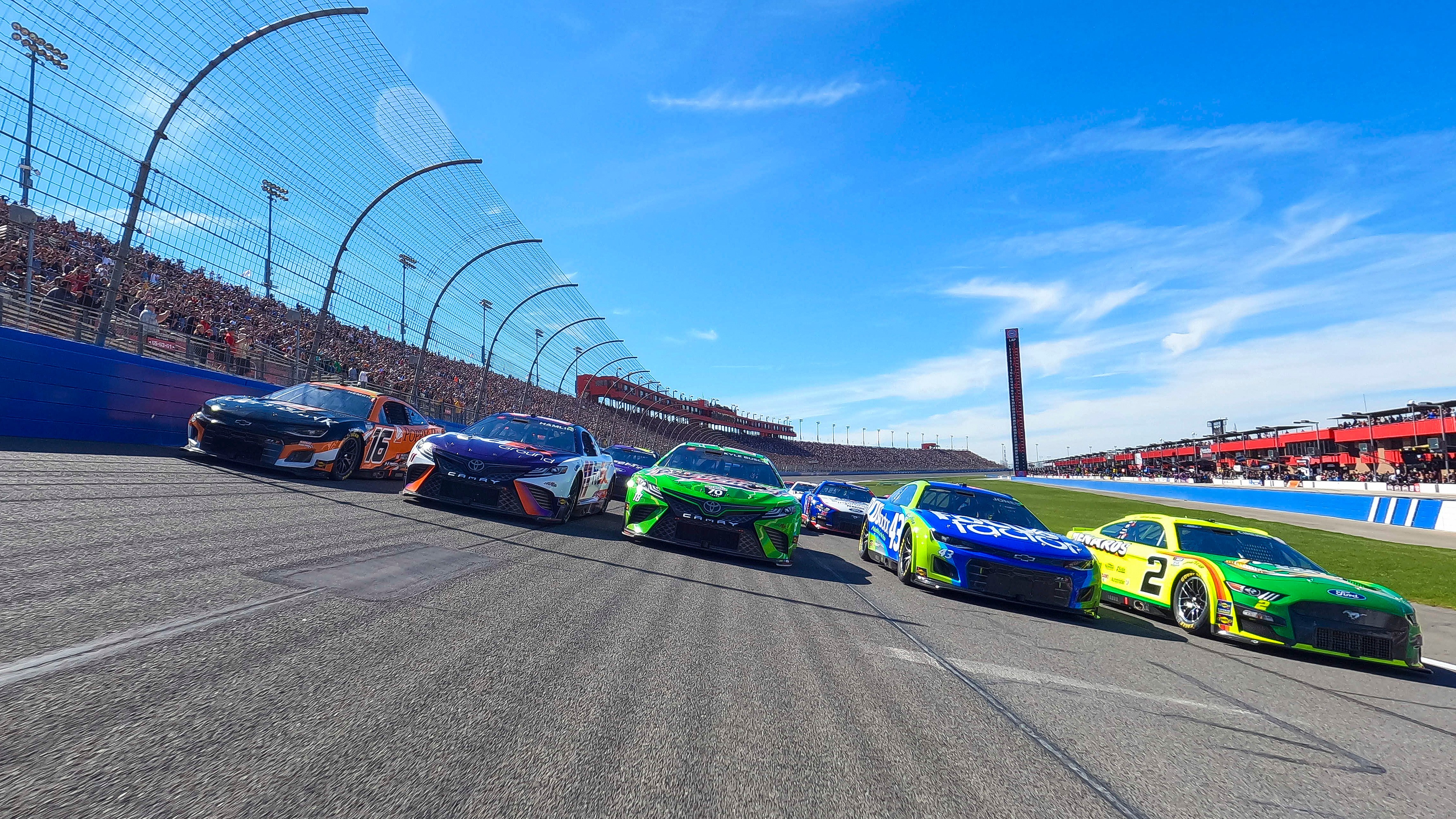
NASCAR
A Farewell Bid to the Two-Mile Auto Club Speedway
In four weeks, all NASCAR attention will focus to Los Angeles, with the second running of the Busch Light Clash at the L.A. Memorial Coliseum. This temporary track has very little history in NASCAR. The same cannot be said however of the facility located 50 miles east.
Three weeks after the Clash, Fontana’s Auto Club Speedway will host the final race on its two-mile configuration. The D-shaped track will be redesigned into a half-mile bullring ahead of 2024. For 25 years, the wide-sweeping, high speed oval has held a special place on the NASCAR calendar. Heres a look back at Auto Club Speedway’s unique history, in the buildup to one more 400-mile race.
Built by Roger Penske from 1995-1996, Auto Club Speedway opened to great fanfare; southern California welcomed in a new permanent home for racing. Designed with inspiration from Michigan International Speedway, this new facility immediately attracted both NASCAR and IndyCar. Located near the former sites of both Riverside International Raceway and Ontario Motor Speedway, this was the latest NASCAR venture at breaking into the car culture-heavy Los Angeles market. California native Jeff Gordon won the inaugural race, en route to his second championship.
IndyCar star Gil de Ferran also put Auto Club in the record books, by setting the closed-course single-lap qualifying record. In 2000, de Ferran’s Reynard ran a 241.428 mph lap average. This still stands today as the fastest lap ever on an oval.
This era also saw another hometown driver make his presence known at Auto Club. The 2002 race was the first victory of Jimmie Johnson’s legendary career. Johnson would take the Hendrick No. 48 to his home track’s victory lane a record six times, including in five of his seven championship seasons. To this day Johnson leads in many stats at the two-mile track, despite not competing since 2020.
After the turn of the century, business was booming in Fontana. Grandstand capacity increased, lights were installed, and a second NASCAR Cup date soon followed.
Due to attendance woes between both dates however, Auto Club was dropped back to just one race for 2011. Waning popularity was largely due to suboptimal California weather, especially for late-season Auto Club Playoff races. Since then, the two-mile oval has held just one yearly date in late February or early March.
In the Gen 6 car’s debut year, Auto Club put on what many still regard as its best finish yet. The last lap came down to a door-to-door battle between Joey Logano and Denny Hamlin. After both leaders made contact, third-place Kyle Busch snuck by for the win. After these on-track fireworks, Tony Stewart went over to fight Logano. Amidst his first year at Team Penske, this race can be pointed to as the moment Joey Logano arrived as a perennial title contender. This 2013 race could also be labeled the beginning of Logano’s villain status on-track, as he refused to give an inch to anyone that day.
Auto Club holds a few special places in the career of another west coast star. 2005 saw the first Cup Series win for young rookie Kyle Busch, at the time with Hendrick Motorsports. 2019’s race also saw one of Busch’s greatest triumphs, as it was his 200th NASCAR National Series victory. Rowdy would add onto this historic achievement months later, by taking his second Cup title. Busch in 2019 marked the seventh Auto Club winner to also go on to the Cup championship.
Just two weeks after Alex Bowman’s 2020 Auto Club 400 win, this track’s future permanently changed with COVID-19. In September, plans were announced to reconfigure Auto Club into a short track. The end result of this year-long process will be a unique hybrid of Bristol and Martinsville. This track transformation was delayed to give fans one more race on the current layout in 2023. Not being repaved since its 1997 opening, redesigning versus resurfacing may be the lesser of two evils. Due to California’s pandemic restrictions, the 2021 race weekend was also canceled in December.
Hosting its first NASCAR event in two years this past February, Auto Club saw a renaissance race. In a welcome throwback to the track’s glory days, this race saw a record-tying 12 cautions and came down to a late pass for the win. The Next Gen car seemingly fixed the lackluster racing product at Auto Club, only for the track to soon be completely reimagined.
Come late February, we will all witness the final NASCAR event on the aged two-mile surface. If 2022 was any indication, then it should be a barnburner event that may only be decided in the closing laps. A new short track is a welcome addition to NASCAR’s future. However it will also be bittersweet to say goodbye to current Auto Club Speedway. With one last hurrah, Auto Club will be a welcome followup to the Daytona 500.
Written by Peter Stratta
Be sure to follow us on Twitter
Be sure to follow the writer on Twitter
Photo Credit to James Gilbert/Getty Images for NASCAR












